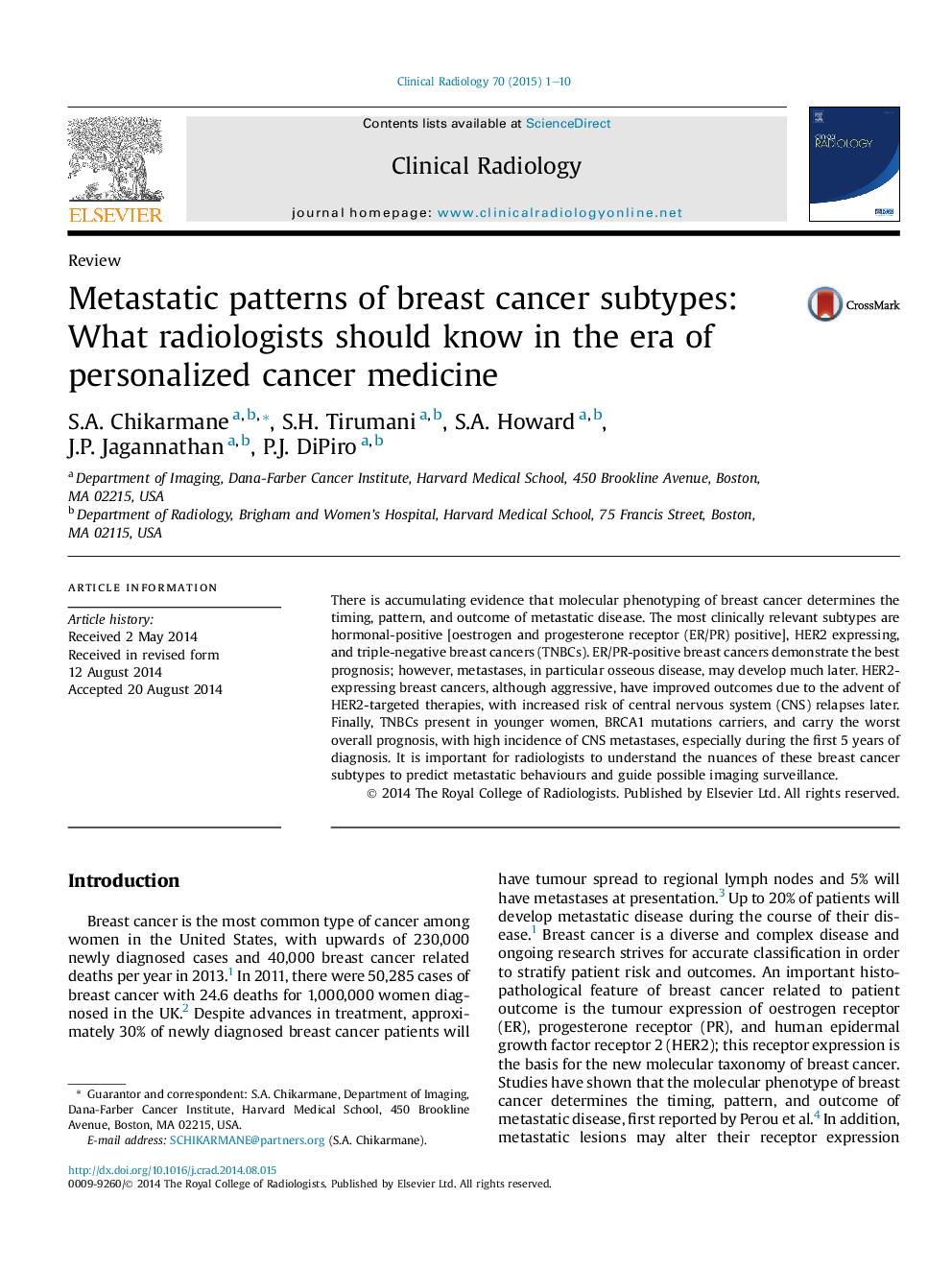| Article ID | Journal | Published Year | Pages | File Type |
|---|---|---|---|---|
| 3981515 | Clinical Radiology | 2015 | 10 Pages |
There is accumulating evidence that molecular phenotyping of breast cancer determines the timing, pattern, and outcome of metastatic disease. The most clinically relevant subtypes are hormonal-positive [oestrogen and progesterone receptor (ER/PR) positive], HER2 expressing, and triple-negative breast cancers (TNBCs). ER/PR-positive breast cancers demonstrate the best prognosis; however, metastases, in particular osseous disease, may develop much later. HER2-expressing breast cancers, although aggressive, have improved outcomes due to the advent of HER2-targeted therapies, with increased risk of central nervous system (CNS) relapses later. Finally, TNBCs present in younger women, BRCA1 mutations carriers, and carry the worst overall prognosis, with high incidence of CNS metastases, especially during the first 5 years of diagnosis. It is important for radiologists to understand the nuances of these breast cancer subtypes to predict metastatic behaviours and guide possible imaging surveillance.
